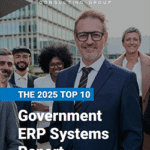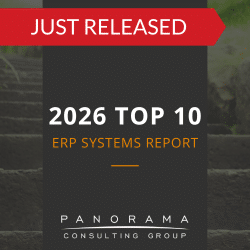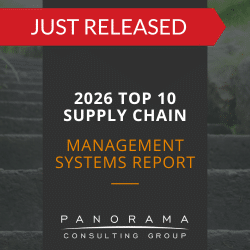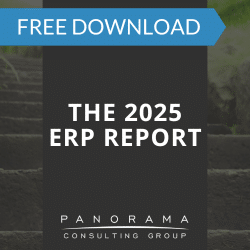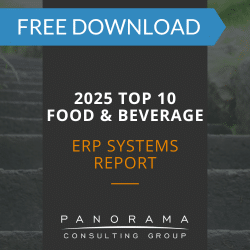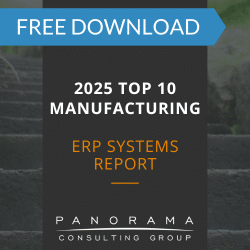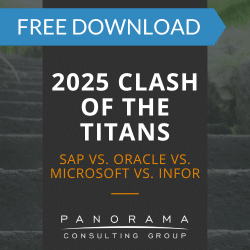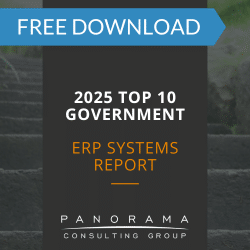Are you considering implementing an ERP system at your organization but are worried about the drawbacks of ERP?
You’re not wrong to worry. There are many disadvantages of ERP that apply to organizations of all sizes – cost and effort chief among them.
However, this doesn’t mean you have to abandon the idea altogether. If you reach the middle of the project and find that ERP is causing more problems than it’s solving, you can always course correct.
And before your project even begins, you can develop a project plan designed to minimize long-term costs and risks.
Today, we’re sharing a few of the problems that ERP software can cause and how to prevent them and/or fix them.
6 Disadvantages of ERP That Don’t Have to Hold True for You
1. Limited Interoperability With Existing Systems
For an ERP system to work seamlessly, it must be able to communicate with the other systems at your organization. This way, users across your company can share data with one another to facilitate more informed decision-making.
For some companies, systems integration is quick and easy, but others may find interoperability extremely cost-prohibitive. If this is the case at your company, then take a closer look at the software you selected. Make sure its features are designed to work with your existing systems and support enterprise-wide data exchange.
Contemplating litigation?
We have multiple software expert witnesses available for provision of reports, depositions, and testimonies.
2. Inadequate Functionality
An ERP system is a hefty investment. As such, it should help you reach your organizational goals rather than pull you further away from them. Yet, that’s exactly what could happen if you select a solution that doesn’t align with your needs.
You can avoid this problem by focusing requirements gathering prior to ERP selection. You should reference this requirements list as you evaluate each ERP software option. Additionally, your ERP provider should have access to this list so they can point you toward the most appropriate solution.
If you decide to skip the requirements gathering stage, you could end up with a feature-rich platform that’s missing key functionality.
3. Lack of Usability
When your ERP solution is easy to use, it’s much easier to convince employees to use it. When it’s clunky and difficult to maneuver, employees avoid it and rely on their familiar workflows.
This is why usability should be a critical consideration during ERP vendor evaluation. A system that’s hard to navigate won’t only lead to increased downtime and reduced productivity, but it could lead to change resistance, which could negatively affect ERP benefits realization.
We recommend conducting end-user training and testing long before you go live to make sure everyone is comfortable behind the screen and to address any usability issues that may arise.
4. Too Many Features
Wait. Aren’t features a good thing? Can you ever have too many?
While an ERP system with many features might sound ideal, it can soon become cumbersome. This is a common mistake that many enterprises and small businesses make – investing in a monolithic ERP platform when what they really need is a much simpler (and less expensive) point solution.
If you do need to implement multiple software modules at once, it can help to approach the implementation in phases.
It’s also smart to think about the features that you truly need before you decide to invest in a slew of them. Don’t be swayed by impressive vendor presentations meant to impress you into over-investing.
5. High Costs
When weighing the pros and cons of ERP systems, you must keep finances top of mind. ERP costs can add up fast.
In addition to your basic software system and general implementation expenses, you may also want to incorporate third-party add-ons, which will come at a price. Then, if users resist the software and the project timeline runs longer than expected, your costs will increase even more.
Once you go live, there are ongoing maintenance costs to consider and ongoing training costs.
It’s no surprise, then, that cost can be a prohibitive factor for many organizations.
To avoid excessively high costs, only pay for the features you actually need and can afford. Don’t get starry-eyed about some of the top ERP systems. Their features might sound high-tech but don’t add any real value to your organization in particular.
Setting realistic expectations about project success factors is also critical. This ensures executives are prepared to invest adequate time, money, and resources for all necessary activities.
6. Data Issues
Data conversion is the process of moving data from one system to the next. It might sound simple in theory, but it’s especially difficult in an ERP implementation. This is why many organizations site data issues as a key disadvantage of ERP.
Before taking these organizations at their word, consider how you can prevent this problem.
First, you shouldn’t transfer any files that are incorrect, outdated, or obsolete. You also need to make sure there are no duplicates.
Most importantly, you should develop a strong data conversion strategy that allows you to identify, examine, and analyze data sources before they enter your ERP solution.
How to Turn Your ERP Into an Asset Rather Than a Liability
As long as you can identify the root of the problem, you can usually solve it and reverse any fallout.
A few steps to help you get there include:
- Evaluate whether your ERP software is a good fit for your company or if there are any functionality gaps.
- Determine if you prioritized the people side of the implementation, and if not, invest more in ERP change management.
- Make sure you’re following implementation best practices.
You may need to bring in an independent ERP consultant to help you understand what’s going wrong. These experts can assist with project recovery efforts so you can avoid ERP litigation.
Don’t Believe the Naysayers
Don’t let the potential disadvantages of ERP get you down. By taking a proactive approach, you can avoid common problems and set your organization up for a successful implementation.
The key is following the right ERP implementation methodology. Tackle critical issues, like system interoperability and data cleanliness, as early as possible, so you have time to take action before a small problem snowballs into a bigger one.
Our ERP consulting team can help you with every stage of your implementation, whether you’re implementing manufacturing ERP software, a supply chain management system, or an eCommerce solution. Contact us below for a free consultation.


